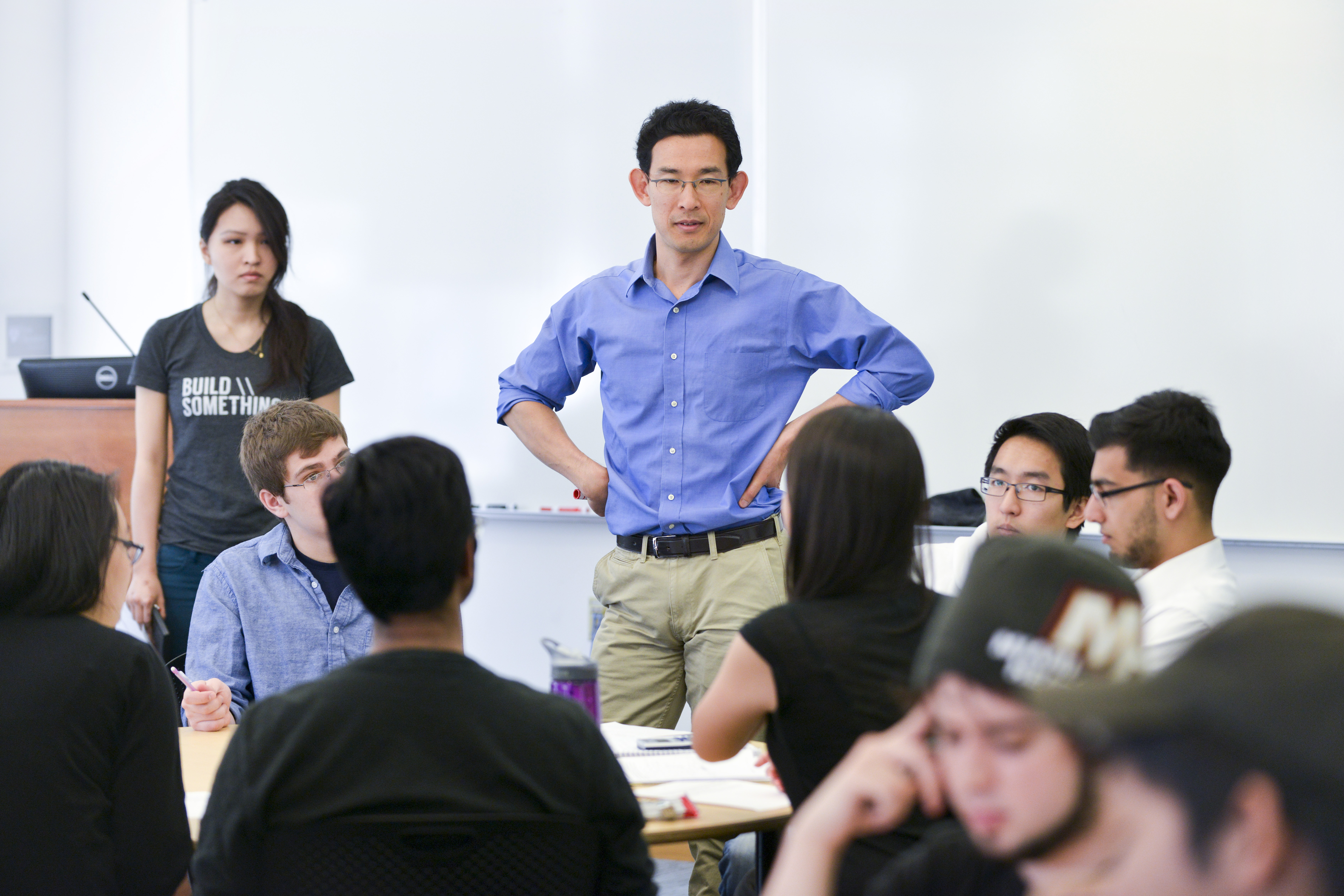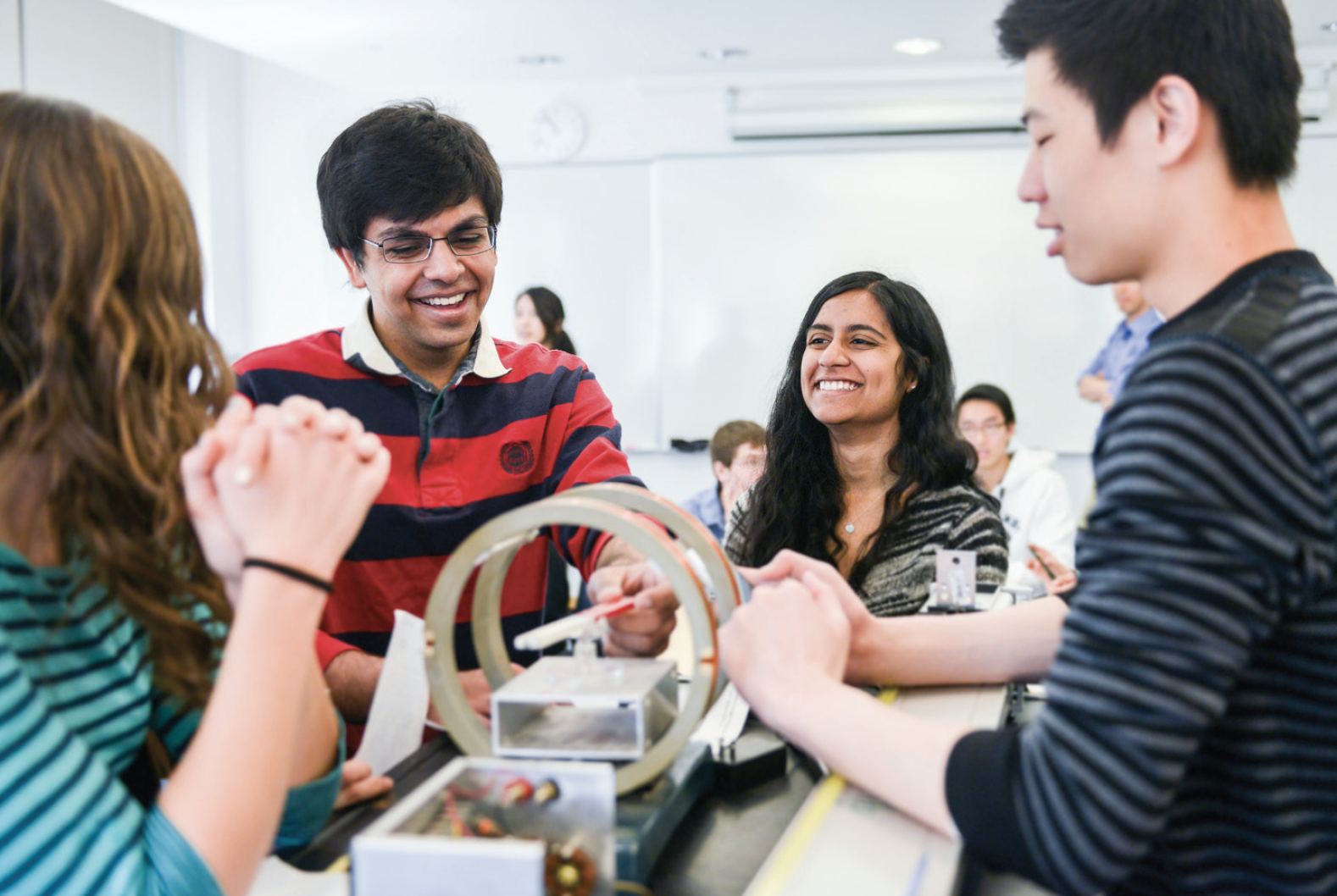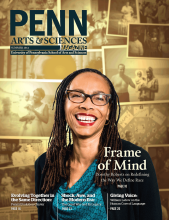Professor Masao Sako makes his way around the room, pausing to eavesdrop on students and fielding theories with a secretive grin on his face. In the middle of the classroom, puzzled students huddle around a contraption that resembles a miniature super-collider. This is Structured, Active, In-class Learning (SAIL), where the focus is on keeping the learning experience dynamic and interactive. The courses refine existing models like the flipped classroom—in which students listen to the lecture portion of the course online—in order to keep students directly engaged with their professor.
“My traditional method of teaching introductory physics consisted of four hours of lecturing per week, and my students spent two hours per week in a lab with graduate student teaching assistants,” says Sako, an associate professor of physics and astronomy. “As a result, there can be a complete disconnect between what the instructors do in class and what students do in the labs. Over the years I’ve heard complaints that those labs are not useful and are stressful. So that defeats the whole purpose of the lab. If you’re not learning anything that’s related to stuff covered in class, why do it?”
In contrast, Sako’s SAIL classes are typically composed of six groups of six students, each with its own roundtable to foster discussion. Student response to the increased interaction has been overwhelmingly positive: “I genuinely enjoyed the course and felt that the small class size allowed each student to interact with the professor on both an academic and personal level,” says Helen Qu, C’17. “I think that one of the main reasons this course has been so rewarding and effective for me is because we are able to ask questions in person while working through the problems.”
Bruce Lenthall, Executive Director of the Center for Teaching and Learning, Advisor on Educational Initiatives to the Vice Provost for Education, and an adjunct assistant professor in the Department of History, says the objective of the SAIL program is to help faculty develop teaching techniques that better enable students not only to thrive but to sharpen their understanding of how to think in the discipline. “Faculty across the country have found that teaching with effective structured activities produces significant learning gains for students, especially when it comes to science and math,” Lenthall says. “Early returns at Penn suggest that these classes are energizing students and making them more aware of their own capacity to learn.”
The courses also have an effect on their instructors. It has challenged Sako to come up with new, more open-ended experiments for students. “Penn kids are too smart for the tutorial books,” he laughs. For one of the labs he brought in three objects: one empty bottle, one half-filled with water, and one packed with marbles. He challenged the students to make a prediction. If he was to roll all three down an inclined plane, which one would go down the fastest? The students were then given two hours to calculate theories and discuss possible solutions. “The answer is the bottle filled with water, due to rotational energy,” says Sako. “It’s an example of a very simple question with a not-so-simple answer.”
In an effort to compare notes, SAIL instructors meet on a monthly basis at the Center for Teaching and Learning to discuss teaching methods and course plans. One of the biggest challenges instructors face in the future is keeping class sizes small. When a physics class reaches capacity—which is considered to be around 40 students—the instructor’s ability to keep everyone progressing at an appropriate pace is challenged. Sako’s students agree that small class size is crucial: “It’s comforting,” says Steve Polomski, ENG’17. “It makes you feel like the people you’re sitting next to are there to help you learn, not compete against you on exams.”
Larry Gladney, Edmund J. and Louise W. Kahn Professor for Faculty Excellence, Chair of the Department of Physics and Astronomy, and Associate Dean of Natural Sciences, says the effectiveness of SAIL courses comes down to the instructor. “We have to go on the judgment of those who have taught these courses many times and thoroughly mastered the subject matter to the point where they have a good understanding of how people learn it,” says Gladney. “Most of us remember how we felt when we really ‘got’ physics and found ourselves explaining it to others. The essence of all the active-learning techniques is that they embody that ‘explaining to others’ component.






